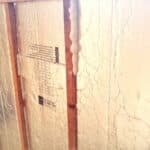When buying a home, the septic system is the most critical part you need to inspect thoroughly.
If the system has been unused for a while, you might wonder about its integrity and functionality. This is because septic system repairs are costly, and you might not have the money to pay for them after purchasing the house.
This article answers the question of how long a septic system can be left unused.
How Long Can a Septic System Sit Unused? All You Need to Know?
When maintained, septic systems can last 15 to 40 years. An unused septic system may last much longer.
How long the unused septic system may last depends on several factors. To assist you in determining how long a septic system can remain unused, we’ll go through four of those factors.
Materials Used in the Construction of the Septic Tank
Septic tanks are made of a variety of materials. Steel is one of them. Steel has the drawback of corroding over time.
A septic tank made of steel will still be exposed to groundwater even after the septic system has been left dormant. It might rust and decay as a result of that exposure.
It might, however, endure longer than a functional septic tank. The components constantly deteriorate over time when a septic system is in operation.
The components become slightly more worn with each use.
This issue is not present in an unused septic system. As a result, a steel septic system that is not in use may live longer than one that is used.
The other sort of material used in the construction of septic tanks is a mixture made of fiberglass and concrete. The most potent substance is this. It stays away from corrosion issues.
A concrete septic system that isn’t used can last for many years. However, the other components of the tank will still wear out eventually.
With the proper maintenance, a used concrete septic system can last up to 40 years.
Vehicle Traffic in the Piping Area
Vehicle traffic is another factor influencing how long an abandoned septic tank lasts.
Your septic system employs buried pipes to get the liquid waste into the earth. These pipelines require great care.
Using big machinery and moving cars over the ground where these pipes are may pose a problem. There is a possibility that the pipes will crack if somebody drives a vehicle or piece of equipment over them.
If the septic tank is not being used, then the chances are that no one is on the property. Because of this, no one will operate a vehicle or heavy equipment over the pipes causing the unused septic system to last longer.
Also, a used septic tank must be emptied. That necessitates the use of pipelines and a vehicle. The majority of contractors are aware of avoiding the pipes.
However, if the location is difficult to access, they can be forced to empty the tank by driving closer to the pipes. These may cause the pipes to break, and the used septic tank could need to be repaired.
There are fewer dangers to a septic system’s piping while not in use; therefore, it lasts longer.
Root Damage and Clogs
Tree roots are another factor that shortens a septic system’s lifespan.
Trees’ root systems enlarge as they get bigger. In your property, roots may have gotten as long as several meters.
A pipe can be reached by one of those roots. The root may destroy the pipe or clog it.
An abandoned septic system has the drawback that no one is around to monitor the trees and root systems. An abandoned septic system might only last a few years in this situation.
Flooding Groundwater
The groundwater is the last component that can affect how long a septic system lasts.
The foundation of a septic system is underground. The amount of groundwater is at most negligible.
The septic system, however, could be harmed if the house is located in a region where groundwater frequently floods. The tank rises as a result of groundwater flooding the cavity.
The pipes are forced to separate when the tank rises. This leads to septic system malfunctions.
If a septic system is not used, it won’t endure very long if it is near a groundwater flood zone. Nobody is on duty to protect the tank or drain the underground water.
A used septic system will have maintenance provided for it. Before the water affects their septic system, someone will be there, ready to fix the issue.
How Durable Are Steel Septic Tanks?
Steel septic tanks have a lifespan of 15 to 20 years if they are in use. They might endure 10 to 30 years if they are not being utilized.
Corrosion is the main danger to steel septic tanks.
The tank may rust if it comes into contact with water. The bottom of a steel septic system frequently cracks due to rusting.
Even the tank’s top can rust and become hazardous.
How Durable are Concrete Septic Tanks?
A concrete septic system can endure 10 to 40 years if it is in use. On the other hand, a concrete septic system that isn’t used can survive practically forever.
Septic systems made of concrete don’t have the same water issues as systems made of steel do.
Pressure on the pipes, root systems, and worn components is the only thing that can cause a concrete septic system to collapse.
As a result, a concrete septic system that has been abandoned may never need to be replaced.
What Happens to a Septic System if it is Unused?
When a septic system is not in use, nothing happens.
Unused septic systems are safe. They don’t experience use-related wear and tear.
If the tank has been used before, solid waste may be inside of it. A neglected septic system is merely degrading that solid waste at most.
Depending on when you choose to use the system again, even the solid waste might be gone.


